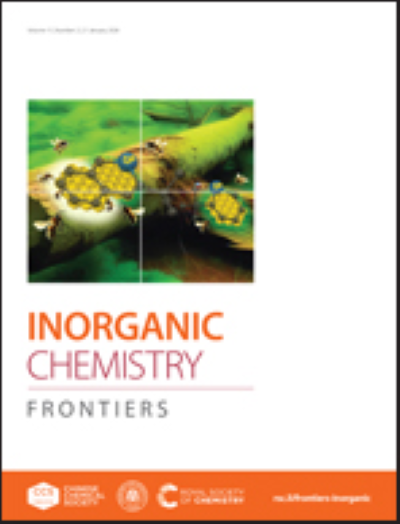MXene涂层显著提高了富镍阴极的速率和稳定性
IF 6.4
1区 化学
Q1 CHEMISTRY, INORGANIC & NUCLEAR
引用次数: 0
摘要
富镍层状阴极在实现锂离子电池的高能量密度方面起着至关重要的作用,主要是因为它们具有可观的理论容量。然而,富镍层状阴极存在结构退化、严重副反应和循环寿命有限的问题,特别是在高工作电压条件下。本研究提出了一种采用二维过渡金属碳化物(MXene)纳米片作为保形表面改性剂的界面工程策略,显著提高了高镍层状氧化物正极材料的结构和电化学稳定性,改性层增强了正极材料界面的电荷和离子输运,有效提高了速率性能。此外,诱导阴极电解质间相(CEI)可以通过PF5在MXene上的优先吸附来减轻HF的攻击,从而显著提高循环稳定性,特别是在高工作电压下。结果表明,改性后的材料具有优异的电化学性能,在1C条件下循环100次后,在4.5V下的容量保持率为96.75%,高于裸NCM90的76.09%。此外,这种涂层工程还增强了阴极的速率能力,使其在10℃时具有142 mAh g⁻¹的高容量,优于裸NCM90的110.6 mAh g⁻¹。本工作为用MXene材料构建稳定的高能量密度富镍层状阴极提供了新的参考。本文章由计算机程序翻译,如有差异,请以英文原文为准。
Extraordinarily Enhanced Rate and Stability of Ni-Rich Cathodes through MXene Coating
Ni-rich layered cathodes play a crucial role in achieving high energy density in lithium-ion batteries, primarily due to their substantial theoretical capacity. However, Ni-rich layered cathodes suffer from structural degradation, severe side reactions, and limited cycle life, particularly under conditions of high operating voltage. This study introduces an innovative interfacial engineering strategy employing two-dimensional transition metal carbide (MXene) nanosheets as conformal surface modifiers to significantly improve the structural and electrochemical stability of high-nickel layered oxide cathode materials The modifying layer enhances the charge and ion transport of the interface for the cathode material, effectively promoting the rate performances. Moreover, the induced cathode electrolyte interphase (CEI) can mitigate the attack of HF by preference adsorption of PF5 on MXene, which substantially improve the cycling stability especially at high operating voltage. As a result, the modified material shows excellent electrochemical performance with 96.75% capacity retention at 4.5V after 100 cycles at 1C, which is higher than bare NCM90 of 76.09%. In addition, the rate capability is also enhanced by this coating engineering, which endows the cathode with high capacity of 142 mAh g⁻¹ at 10C, superior to the 110.6 mAh g⁻¹ of bare NCM90. This work provides a new reference for constructing stable high-energy-density Ni-rich layered cathode with MXene materials.
求助全文
通过发布文献求助,成功后即可免费获取论文全文。
去求助
来源期刊

Inorganic Chemistry Frontiers
CHEMISTRY, INORGANIC & NUCLEAR-
CiteScore
10.40
自引率
7.10%
发文量
587
审稿时长
1.2 months
期刊介绍:
The international, high quality journal for interdisciplinary research between inorganic chemistry and related subjects
 求助内容:
求助内容: 应助结果提醒方式:
应助结果提醒方式:


